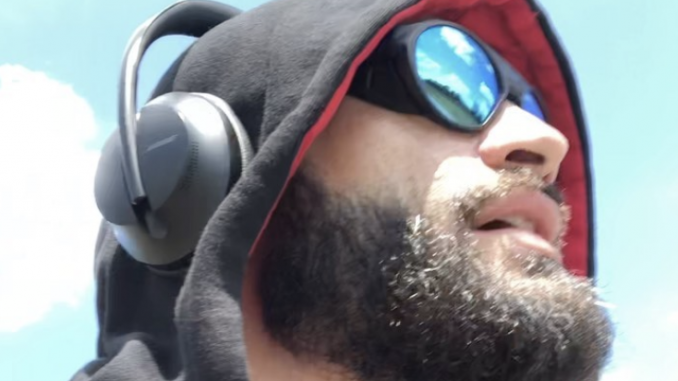
SPOTLIGHTED PODCAST ALERT (YOUR ARTICLE BEGINS A FEW INCHES DOWN)...
The Reign of Terror was a period of extreme violence and political upheaval in France. It was a time when the French Revolution, which had begun in 1789 with the storming of the Bastille, had reached its most radical and violent phase.
The Reign of Terror was characterized by mass executions, arbitrary arrests, and the suppression of dissent. The guillotine, a new invention that made executions quick and efficient, became the symbol of terror. The Reign of Terror was a time of fear and uncertainty, as people never knew when they might be arrested or executed.
As a professional wrestling fan, one of the most memorable eras in WWE history for me was the infamous “Reign of Terror” of Triple H. For those who may not be familiar, this was a period in WWE history where Triple H dominated the main event scene and held the World Heavyweight Championship for an extended period of time. In this article, I will explore the rise and fall of Triple H’s Reign of Terror and its impact on WWE’s creative direction and fan reception.
The Reign of Terror officially began in 2002 when the World Heavyweight Championship was created and Eric Bischoff awarded it to Triple H during Monday night Raw. Triple H lost the title to Shawn Michaels at Survivor Series, then won it back at December’s Armageddon, and then the 280-day reign started.
The fans’ reaction to Triple H’s Reign of Terror were mixed. While he was one of the most hated heels in WWE then, many fans appreciated his dominant persona and enjoyed seeing him as the top star in the company. However, as the Reign of Terror continued, many fans grew tired of Triple H’s dominance and wanted to see new stars pushed to the top of the card. This led to frustration among fans and a decline in ratings for WWE.
The Reign of Terror was a defining period in WWE history, marked by controversy, dominance, and fan stagnation. While it may not have been the most beloved period in WWE history, it was undoubtedly one of the most decisive.
Flash Forward to Roman Reigns
Roman’s current title run began at the 2020 Payback pay-per-view, where he defeated “The Fiend” Bray Wyatt and Braun Strowman in a triple-threat match to become the Universal Champion. This time, Reigns’ title win differed from his previous reigns, as he turned heel for the first time in his WWE career. Reigns aligned himself with Paul Heyman and adopted a more aggressive and calculated persona, which has been a massive hit with fans.
Reigns’ heel turn has been one of the best things to happen to WWE in a long time. His newfound attitude and demeanor have made him a more compelling character and his matches have been some of the best in WWE in recent years. Reigns’ heel turn has also allowed him to showcase a different side of his character, which has been a refreshing change for fans tired of his overly babyface persona.
Reigns’ current title reign at 949 days has greatly impacted WWE. It has helped to elevate the Universal Championship to new heights and has made Reigns one of the most dominant and compelling champions in recent memory. In addition, Reigns’ title reign has also given rise to some new stars, such as The Usos, who have become a fan favorites thanks to their performances alongside Reigns.
Fan reactions to Reigns’ current title reign have been mixed. While some fans have embraced Reigns’ heel turn and his newfound character, others have criticized WWE for pushing Reigns too hard and not giving other stars a chance to shine. However, there’s no denying that Reigns’ current title reign has been one of the most talked-about storylines in WWE and has helped to reinvigorate the company’s product.
Storytelling is an art that has been around for centuries. It is a way for humans to connect with each other, share experiences, and pass on knowledge. A good story has the power to inspire, entertain, and even change lives. However, not all stories are created equal. The way a story is crafted can make all the difference in whether it resonates with the audience or falls flat.
Missing the peak in a story can be detrimental to the narrative. It can cause the audience to lose interest, become disengaged, and ultimately forget the story altogether. A missed peak can also result in a lack of emotional connection with the audience, which is crucial in storytelling.
Many people felt WrestleMania 39 was a chance to make Cody Rhodes a colossal star. Following WrestleMania 39 Night Two, FITE’s Jon Alba asked Triple H about the decision to have Roman Reigns defeat Cody Rhodes in the main event of WrestleMania 39. “What I would say to that is first, ‘drag things out’ sounds negative. It’s not ‘drag things out,’ it’s tell the story. It’s telling a story. Where do you want to go with a story and how do you want to get there? I think in the moment, you think like, ‘Oh my god, I can’t believe….’ If you’re watching a movie and you thought every scene in the movie was the last scene in the movie,” Triple H explained, “the entire movie would be like, ‘I can’t believe they just did that; it was the worst movie ever,’ and then you go, ‘Oh wait, there’s more.’ Oh wait, there’s more.”
“Cody losing in a way similar to how his father once did, only to avenge it, could be a tremendous avenue to take should it be eloquently unraveled on television,” Alba wrote for SEScoops. “It is a plausible route to go given Rhodes’ general cadence and character, but there are various elements at play. Injury risk, tempering fan reaction after seeing their hero come up short, or general lack of interest for a rematch could hamper the hopeful execution.”
The tagline used for WrestleMania 39 was “Finish the story,” but fans may put down the book if the Reign of Roman Reigns continues without the proper ending.
CATCH-UP: Triple H set to appear on Smackdown this week




Leave a Reply
You must be logged in to post a comment.